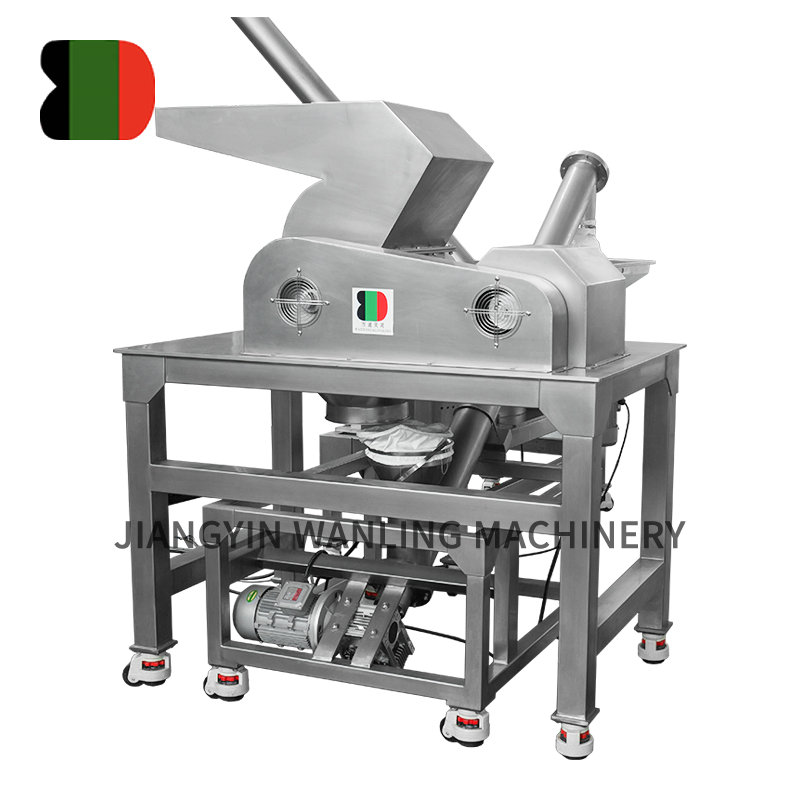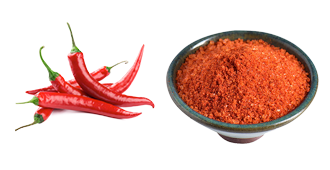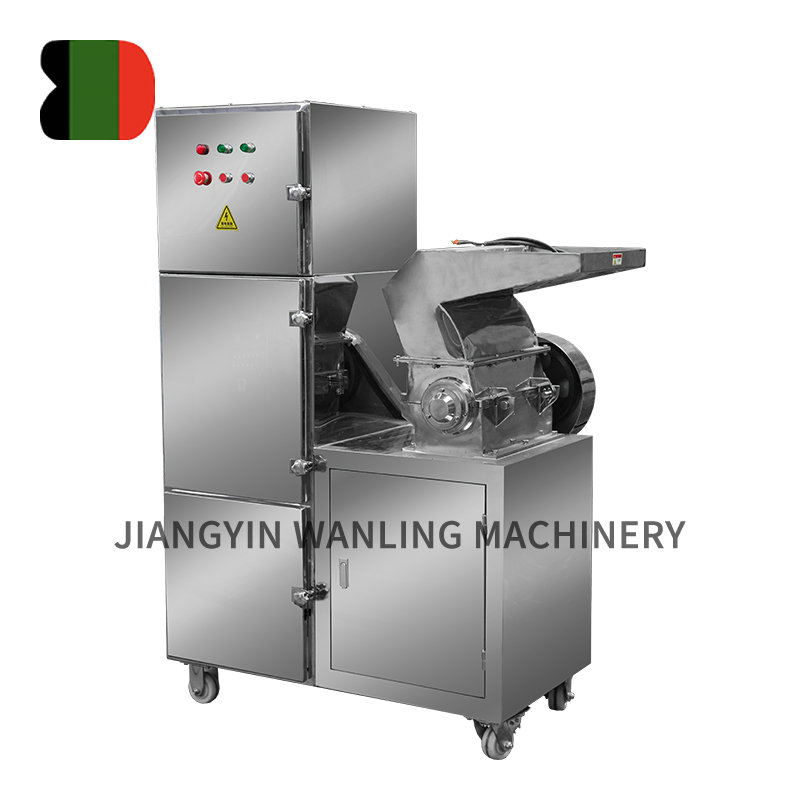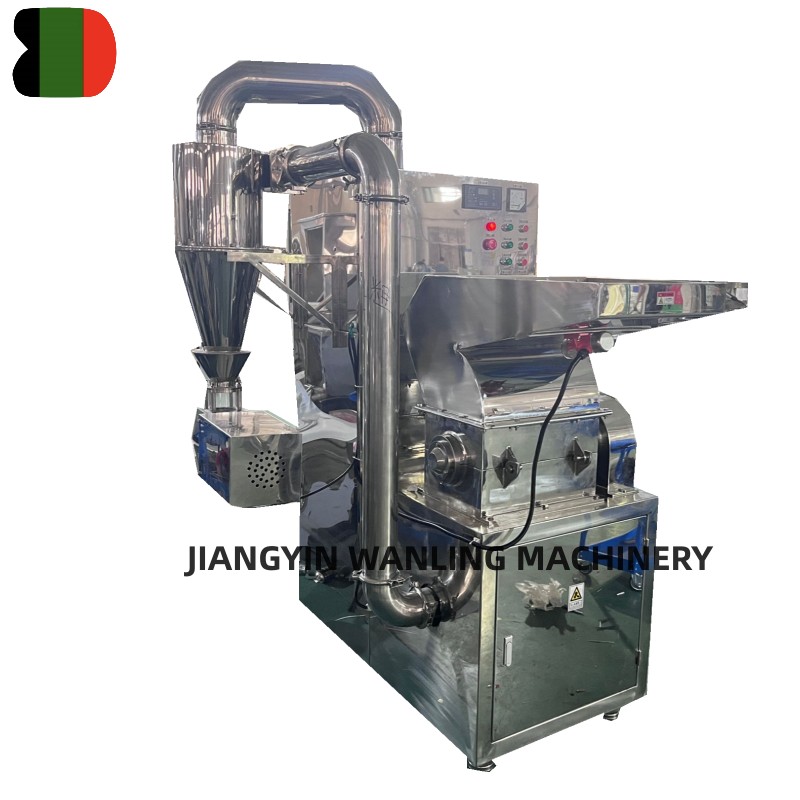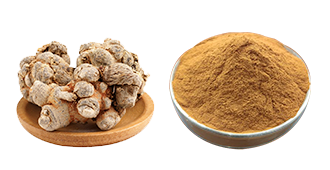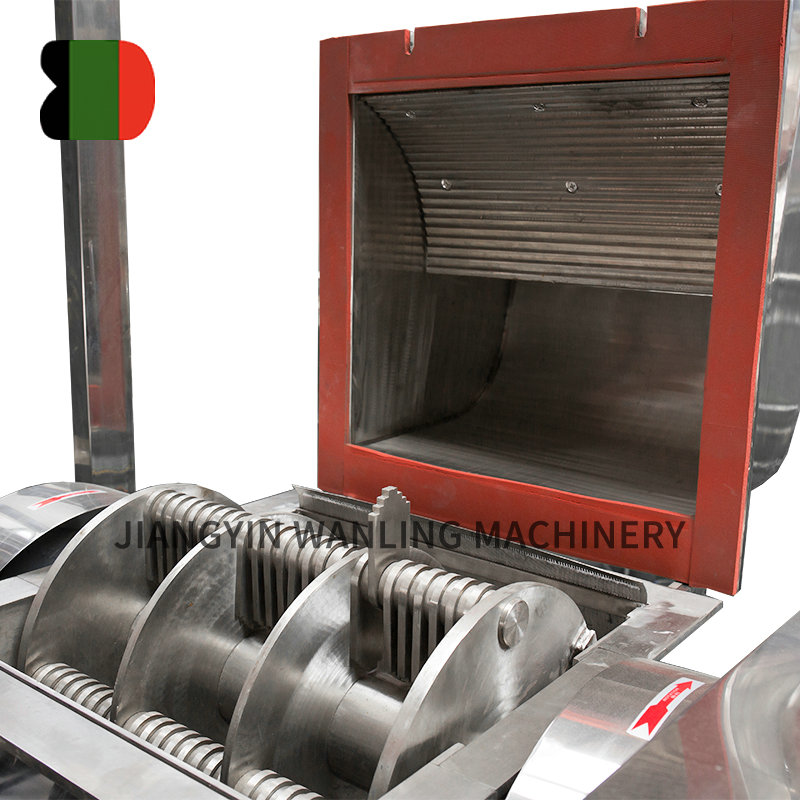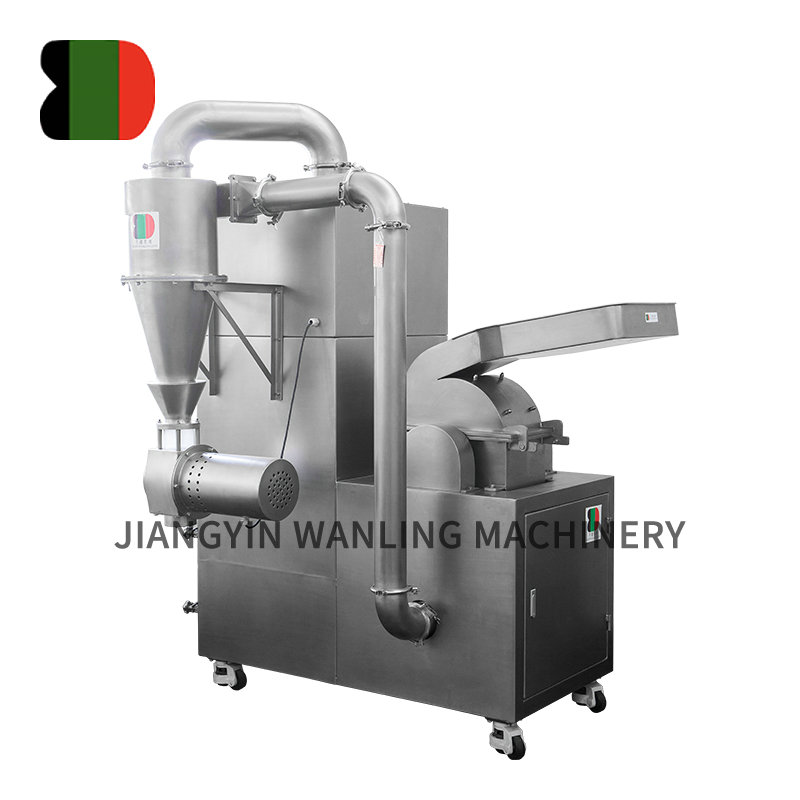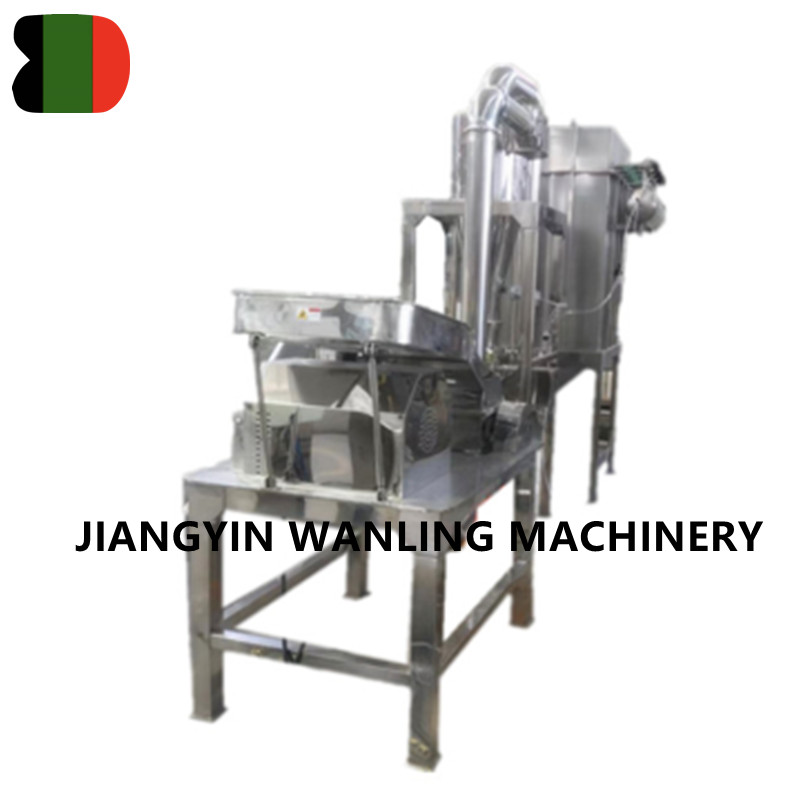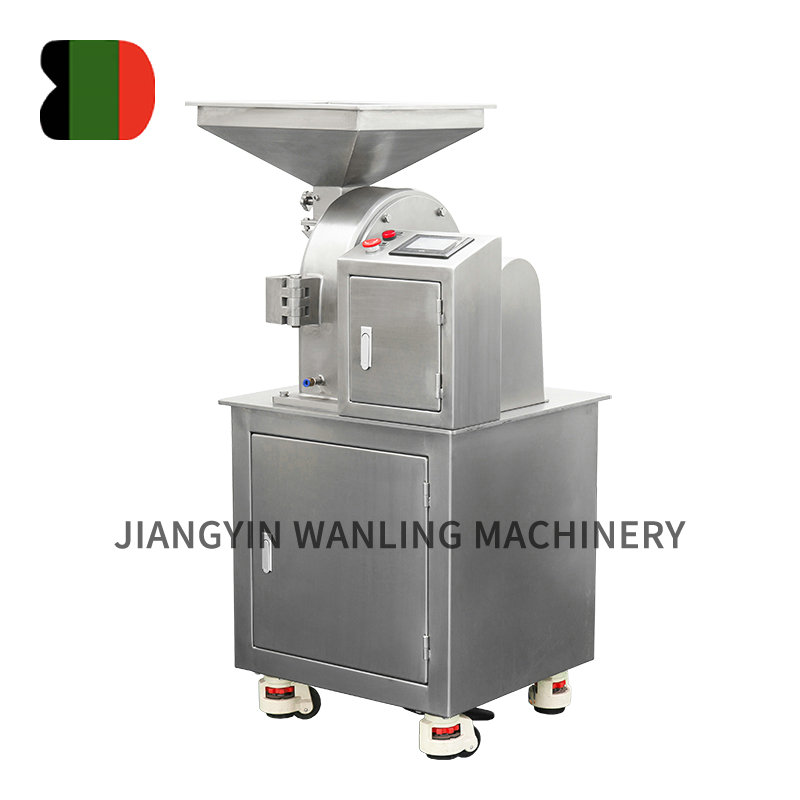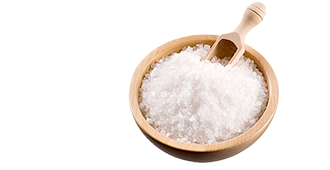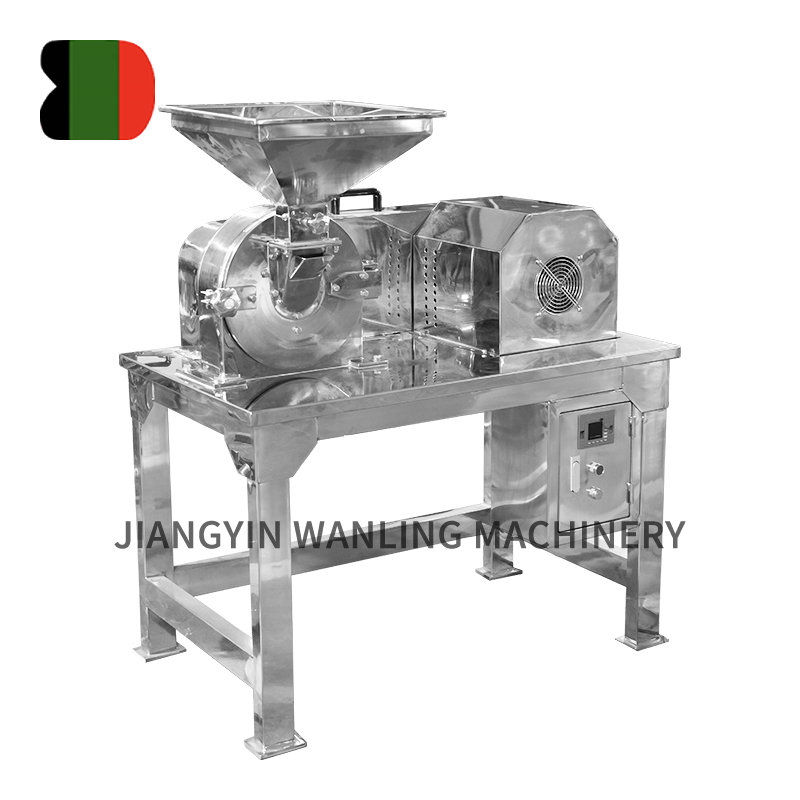The design of a double cone blender can be modified in several ways to effectively handle specific materials, particularly those that are hygroscopic, cohesive, or sensitive to shear forces. Here are some key modifications:
Variable Speed and Agitation: Adjusting the blending speed and incorporating variable-speed drives can optimize mixing for different material properties. For cohesive or sensitive powders, slower speeds may be used to prevent compaction and maintain particle integrity.
Modified Cone Angles: The angles of the cones can be adjusted to improve the flow characteristics of the materials being mixed. For example, a steeper angle may help in moving bulkier powders more efficiently.
Incorporation of Baffles: Adding internal baffles can disrupt the flow pattern, enhancing mixing for difficult-to-blend materials by creating turbulence and promoting better interaction between components.
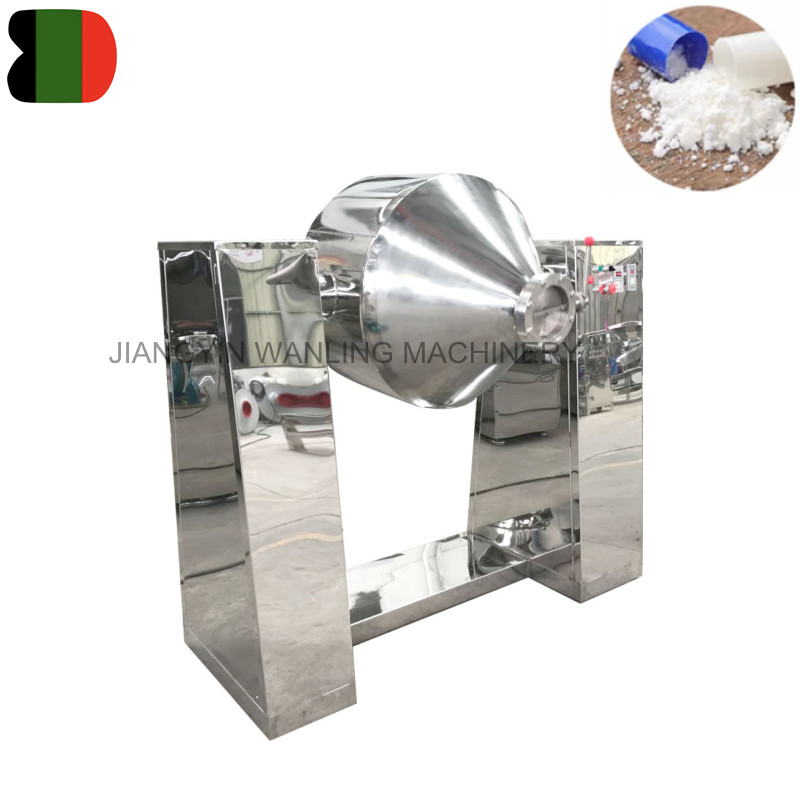
Coating and Surface Treatment: The interior surfaces can be coated with materials that reduce friction or prevent sticking, which is particularly useful for hygroscopic or sticky powders that tend to clump.
Use of Containment Features: For materials that generate dust or require containment, adding features such as covers or dust collection systems can ensure safety and maintain material integrity.
Heating or Cooling Jackets: Incorporating jackets for heating or cooling can help manage temperature-sensitive materials. This is important for products that may degrade or change properties under certain temperature conditions.
Feed and Discharge Modifications: Designing customized feed and discharge systems can facilitate the handling of bulk materials or those that require controlled feeding, ensuring a more consistent blend and reducing waste.
Integration of Sensors and Monitoring Systems: Adding sensors for real-time monitoring of parameters like moisture content, temperature, and blending uniformity can help operators adjust the process dynamically, ensuring optimal mixing conditions for specific materials.



 Español
Español